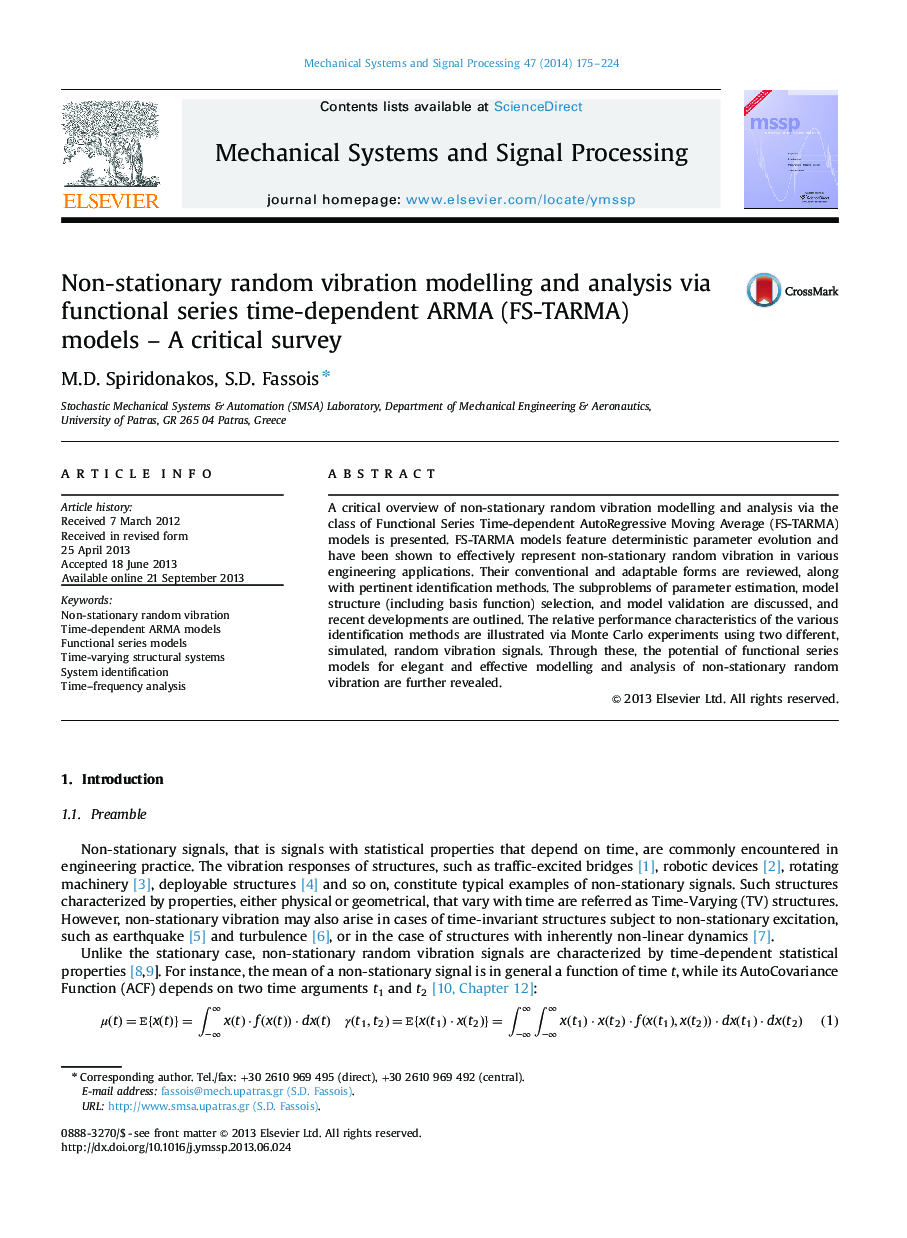| Article ID | Journal | Published Year | Pages | File Type |
|---|---|---|---|---|
| 560381 | Mechanical Systems and Signal Processing | 2014 | 50 Pages |
•Critical review of FS-TARMA models for non-stationary vibration modeling.•Model forms are classified and compared.•Adaptable models are introduced.•Identification techniques systematically presented.•The methods use and performance are assessed via Monte Carlo simulations.
A critical overview of non-stationary random vibration modelling and analysis via the class of Functional Series Time-dependent AutoRegressive Moving Average (FS-TARMA) models is presented. FS-TARMA models feature deterministic parameter evolution and have been shown to effectively represent non-stationary random vibration in various engineering applications. Their conventional and adaptable forms are reviewed, along with pertinent identification methods. The subproblems of parameter estimation, model structure (including basis function) selection, and model validation are discussed, and recent developments are outlined. The relative performance characteristics of the various identification methods are illustrated via Monte Carlo experiments using two different, simulated, random vibration signals. Through these, the potential of functional series models for elegant and effective modelling and analysis of non-stationary random vibration are further revealed.
